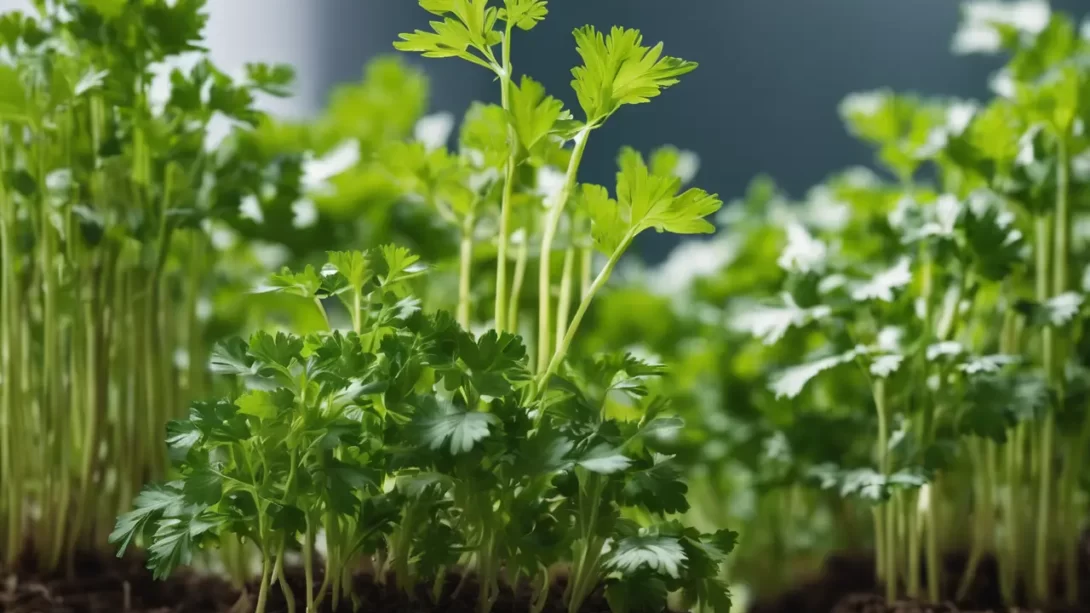Cilantro, a popular herb in various global cuisines, is known for its fresh and pungent flavor. Growing cilantro from cuttings is a quick and efficient method, ideal for gardeners who wish to propagate the plant easily. This technique can provide a continuous supply of cilantro without the need for seeds.
Cilantro
Cilantro (Coriandrum sativum) refers to the leafy part of the plant, while coriander typically describes the seeds. Cilantro is an annual herb with a short life cycle, often culminating in flowering and seeding (bolting) when the weather gets warmer. Understanding this growth pattern is key to successful cultivation from cuttings.
Selecting Cuttings
Choose healthy cilantro stems for your cuttings. Look for stems that are robust, green, and have a good amount of leaf growth. Avoid stems that are showing signs of flowering, as these are less likely to root effectively. Cuttings should be about 3-4 inches long, taken from a mature plant.
Preparing for Planting
To prepare cilantro cuttings for planting, use a sharp pair of scissors or pruners to make a clean cut. Remove leaves from the lower half of the cutting, leaving the top leaves intact. This will help prevent rot when the cuttings are placed in water. Gather a small container filled with water to root your cuttings.
Rooting Cilantro Cuttings
Rooting cilantro cuttings in water is a straightforward process. Place the prepared cuttings in your container with water, ensuring that the leafless part of the stem is submerged. Position the container in a spot where the cuttings receive indirect sunlight. Change the water every couple of days to keep it fresh and prevent bacterial growth. Roots typically begin to develop within 7 to 10 days. Watch for root growth, which is a sign that your cuttings are ready to be transplanted.
Transplanting Rooted Cuttings
Once the roots are about an inch long, your cilantro cuttings are ready for soil. Choose a potting mix that drains well and select an appropriate container with drainage holes. Gently transfer each cutting into the soil, planting them at the same depth they were in the water. Water the newly planted cuttings thoroughly. Place the container in a sunny spot, as cilantro thrives in full to partial sunlight.
Caring for Cilantro Plants
Cilantro plants require consistent moisture, so water them regularly. However, be cautious not to over-water, as cilantro does not like soggy soil. Fertilization isn’t usually necessary if you’re using a quality potting mix. To prevent bolting, keep the plants in a cooler area and regularly harvest the leaves. Pinching off any emerging flower buds can also prolong the harvesting period.
Harvesting Cilantro
To harvest cilantro, simply snip off the outer leaves with scissors, leaving the inner leaves to continue growing. This method encourages the plant to produce more foliage rather than flowering and going to seed. Regular harvesting can prolong the life of the plant and provide a steady supply of fresh cilantro. Harvest in the morning when the leaves are most flavorful.
Common Problems and Solutions
Growing cilantro from cuttings can sometimes present challenges. Common issues include yellowing leaves, which may indicate over-watering or poor drainage. Ensure your cilantro has well-draining soil and avoid letting the roots sit in water. Pests like aphids can also be a problem; these can usually be managed with a gentle spray of water or the use of insecticidal soap.
Bolting is another issue, especially in warmer weather. If your cilantro starts to produce flowers, it will stop producing as many flavorful leaves. To combat this, try to keep the plants cool and harvest regularly.
Conclusion
Growing cilantro from cuttings is a rewarding and efficient way to ensure a continuous supply of this flavorful herb. By understanding the rooting process, providing the right care, and addressing common issues promptly, you can enjoy fresh cilantro in your kitchen throughout the growing season. This method is not only practical but also a great way to expand your gardening skills.



